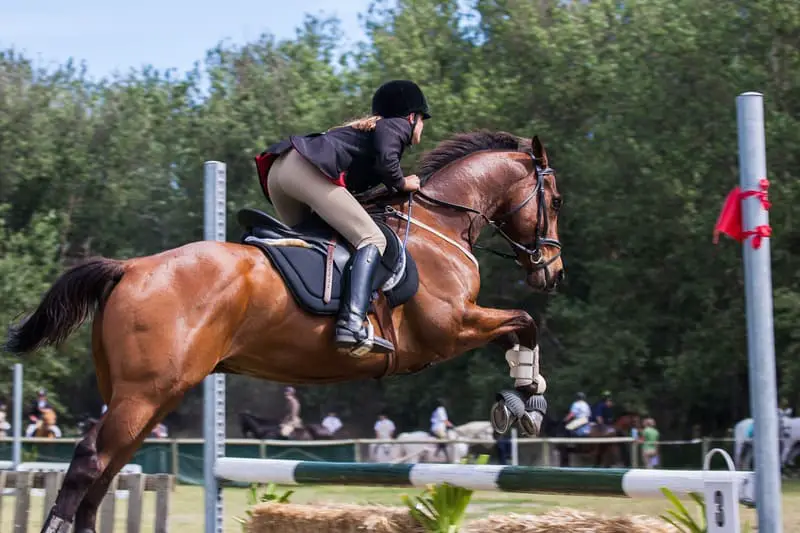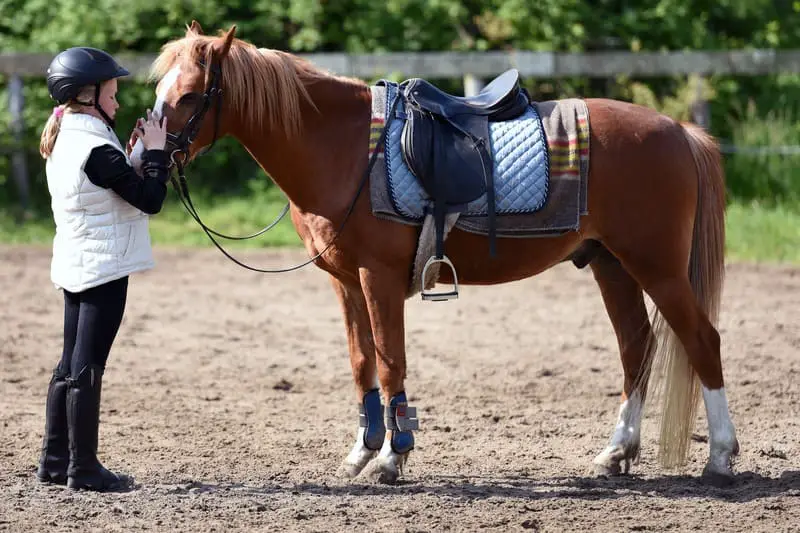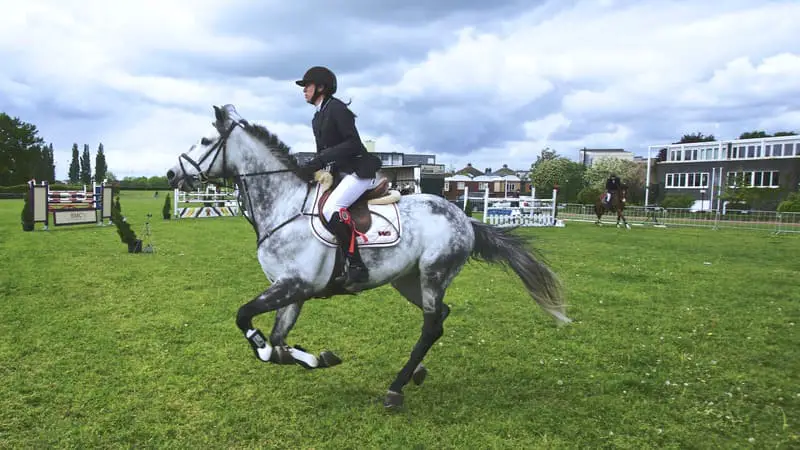Horseback riding is a physically demanding activity that has been practiced for centuries, and it continues to be popular for various purposes, including sport, leisure, and even therapy. But does horseback riding count as exercise? In this comprehensive exploration, we will delve into the physical, mental, and overall health benefits of horseback riding, examining whether it qualifies as a form of exercise.

The Physical Demands of Horseback Riding
Horseback riding requires a combination of balance, strength, flexibility, and coordination. It engages numerous muscle groups and stimulates various body systems. To determine if horseback riding qualifies as exercise, it’s essential to break down the physical demands and benefits associated with this activity.
1. Core Strength
One of the most critical aspects of horseback riding is maintaining proper posture and balance while on the horse. Riders must engage their core muscles to sit upright and stabilize themselves. The constant adjustment of balance and posture is an isometric workout for the abdominal and lower back muscles, helping to improve core strength over time.
2. Leg Muscles
The leg muscles are heavily engaged during horseback riding. Riders use their legs to cue the horse and maintain contact with the horse’s sides. Stirrup work requires leg strength and flexibility to control the horse effectively. The inner thigh muscles, quadriceps, hamstrings, and calf muscles all get a workout during riding.
3. Balance and Coordination
Horseback riding demands a high degree of balance and coordination. Keeping the body centered over the horse while adjusting to the horse’s movements is a constant challenge. This strengthens the rider’s proprioception and balance, leading to improved overall coordination.
4. Cardiovascular Fitness
While horseback riding is not a cardiovascular exercise in the traditional sense of jogging or cycling, it can still elevate the heart rate and provide a mild cardiovascular workout. Riding at a trot or canter can increase the heart rate, improving overall cardiovascular fitness, especially when done for more extended periods or in the context of competitive riding.
5. Flexibility
Riders need to remain supple and flexible to move with the horse’s motions. This helps to prevent stiffness and muscle imbalances. Over time, riders often notice improved flexibility, particularly in the hip and lower back areas.
6. Endurance
Horseback riding can require endurance, especially during longer rides or competitive events. Riders need to maintain good posture and balance throughout the ride, which can be physically taxing. Over time, consistent riding can improve endurance and stamina.
7. Upper Body Strength
While the lower body muscles are the primary focus, riders also use their upper body muscles, including the arms and shoulders, to maintain control of the reins and the horse. This can contribute to improved upper body strength and muscular endurance.

Mental and Psychological Benefits
In addition to the physical demands, horseback riding offers numerous mental and psychological benefits that contribute to overall well-being. These include:
1. Stress Reduction
Spending time with horses and riding can be a soothing and stress-reducing activity. The connection between humans and animals is well-documented in reducing stress and promoting relaxation.
2. Mindfulness
Riding requires a high level of concentration and presence. Riders must be attuned to the horse’s movements, respond to cues, and stay alert. This level of mindfulness can help individuals focus and improve their mental clarity.
3. Self-Confidence
Mastering the skills required for horseback riding can boost self-confidence. Overcoming challenges, working with a large animal, and achieving progress in riding abilities can provide a sense of accomplishment and self-assurance.
4. Emotional Connection
Building a bond with a horse and understanding their behavior can foster emotional connections and empathy. These emotional benefits can contribute to overall mental well-being.
Riding for Exercise: Types of Riding
It’s important to note that the physical demands of horseback riding can vary depending on the type of riding and the specific discipline involved. Here are some common types of riding and how they impact physical fitness:
1. Trail Riding
Trail riding typically involves riding at a walk or gentle trot on natural terrain. While it may not provide an intense cardiovascular workout, it offers the benefits of fresh air, relaxation, and an opportunity to connect with nature. The physical demands are moderate, with a focus on balance, endurance, and enjoying the journey.
2. Dressage
Dressage is a discipline that emphasizes precise, controlled movements of the horse. It requires a high degree of balance, coordination, and core strength. Riders engage in specific patterns and movements, often at a walk, trot, or canter. Dressage riders can develop excellent core strength and body awareness.
3. Jumping
Jumping involves navigating obstacles on horseback. This discipline requires strong leg muscles for proper positioning and control, as well as upper body strength for maintaining balance. Jumping can be physically demanding, especially during competitions that involve multiple jumps.
4. Western Riding
Western riding, including activities like reining and barrel racing, places a significant emphasis on the rider’s ability to cue the horse with minimal rein contact. This discipline requires a strong seat, lower body control, and effective communication with the horse. It can provide a good workout for the core and legs.
5. Eventing
Eventing is a demanding equestrian sport that combines dressage, cross-country jumping, and stadium jumping. It requires a high level of fitness, including cardiovascular endurance, strength, and coordination. Riders must be physically prepared for the various phases of the competition.

The Duration and Intensity of Riding
The effectiveness of horseback riding as exercise also depends on the duration and intensity of the activity. A leisurely trail ride or a slow walk around the riding arena may provide less physical benefit compared to an intense training session or competitive event.
For those who are looking to use horseback riding as a form of exercise, the following factors are crucial:
1. Riding Frequency
Consistency is key to deriving fitness benefits from horseback riding. Regular riding sessions are more likely to lead to improved physical fitness. Riding once a week may not provide the same level of benefit as riding several times per week.
2. Riding Intensity
The intensity of the ride matters. Engaging in more vigorous riding activities, such as trotting, cantering, or jumping, is more likely to provide cardiovascular benefits and strength training. However, these activities may also require more experience and skill.
3. Riding Duration
Longer rides, especially those that span hours, can contribute to improved cardiovascular endurance and overall fitness. Extended rides, such as endurance riding, provide a more intense workout compared to shorter sessions.
Caloric Expenditure and Weight Management
Horseback riding, like any physical activity, can contribute to caloric expenditure. The number of calories burned during riding depends on several factors, including the rider’s weight, the intensity and duration of the ride, and the type of riding involved. Riding at faster gaits and for longer durations will generally burn more calories.
While it’s difficult to provide precise numbers for caloric expenditure during horseback riding due to these variables, it’s safe to say that it can contribute to overall weight management and fitness. For individuals seeking to lose or maintain weight, incorporating horseback riding into a well-rounded exercise routine can be beneficial.
Factors to Consider
While horseback riding offers numerous physical and mental benefits, there are some factors to consider when evaluating it as a form of exercise:
1. Skill Level
The physical demands of horseback riding can vary greatly depending on the rider’s skill level. Novice riders may expend more energy on balance and basic control, while experienced riders can focus on more advanced movements and skills. Therefore, the fitness benefits may differ between novices and experts.
2. Horse and Equipment
The type of horse and riding equipment can impact the physical demands of riding. Larger and more spirited horses may require greater physical effort to control, while well-trained and calm horses may offer a smoother ride.
3. Safety Precautions
Safety should always be a priority when engaging in horseback riding. Riders must wear appropriate protective gear, such as helmets, and adhere to safety guidelines to minimize the risk of injury.
4. Cross-Training
Horseback riding can be complemented with other forms of exercise to achieve a well-rounded fitness routine. Cross-training, which includes activities like strength training, aerobic exercise, and flexibility training, can enhance the overall physical benefits of riding.
Conclusion
Horseback riding can indeed be considered a form of exercise, as it engages a variety of muscle groups, improves balance, coordination, and flexibility, and contributes to cardiovascular fitness, especially in more intense forms of riding. It offers not only physical benefits but also mental and emotional advantages, including stress reduction and improved self-confidence.
However, the fitness benefits of horseback riding can vary based on factors such as the type of riding, intensity, and duration of the activity, as well as the rider’s skill level. It is essential to engage in regular riding and consider it as part of a broader fitness routine for optimal results. Whether you ride for the love of horses, the joy of being in nature, or the desire to stay fit, horseback riding can be a fulfilling and health-enhancing activity.
